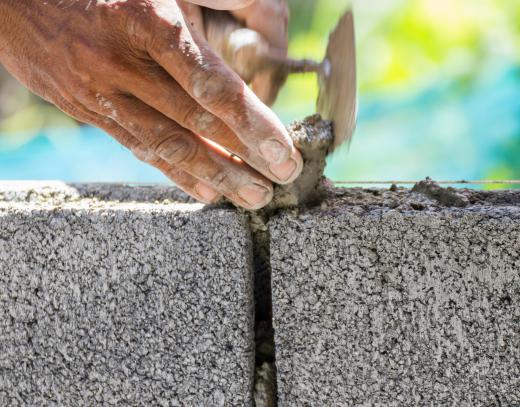A concrete pier is a foundation element suitable for many types of structures but most commonly used for timber frame post and beam buildings. A concrete pier typically consists of a round or square concrete pillar supported at the bottom by a footer piece which serves to spread the load carried by the pier. The pier is placed or cast with the footer below the frost line and its top end above the ground surface. The top of the concrete pier is typically equipped with a frame or bracket to which the structures upright beams are attached. Pier foundations are affordable and effective for most soil types in areas which have little or no earthquake or hurricane activity.
Standard concrete perimeter foundations are as solid as a rock but expensive and time consuming to construct. The concrete pier foundation is a low cost, efficient alternative to the perimeter foundation and particularly well suited to timber frame cabins and smaller buildings constructed in areas with good soil formations. In fact, the pier foundation may be successfully used for structures ranging from a simple deck or garden shed to huge highway bridges. Concrete piers are not only cheap and effective but generally simple enough to construct for the average do-it-yourself (DIY) enthusiast to successfully install.

Pier foundations consist of an upright column of either cylindrical or square cross section which rests on an extended footer. The footer usually stands on a bed of well compacted crushed rock and, due to its larger area, helps in evenly spreading the load carried by the pier. The footer is usually located below the frost line to prevent lifting of the structure during severe frost conditions. The top of the concrete pier is located above the soil surface at a height suitable for the particular structure. The pier is equipped with a bracket or frame on its top end which is used to affix the structures upright posts.
Foundation piers are simple to pour in situ and require little framing. Fortunately for the "weekend warrior" there are many prefabricated concrete pier kits available which make the job easy even for those with no experience with concrete construction. These kits generally consist of plastic footer forms with a cardboard tube and integral post frame attached to them to act as a column form. The whole assembly is placed in the pier hole and checked for levels and correct line up with other pier members. Once the tube has been trimmed to the correct lengths and reinforcing bars inserted, the concrete is simply poured into it and agitated to remove air pockets.
Once the concrete has cured, the timber posts can be attached and the rest of the structure can commence. The concrete pier can be used for most smaller buildings in almost all stable soil formations in areas that experience negligible hurricane and earthquake activity. If these conditions do exist, however, pier foundations may still be used subject to an engineer's approval. Concrete pier foundations generally last as long and are as strong as conventional foundations.
